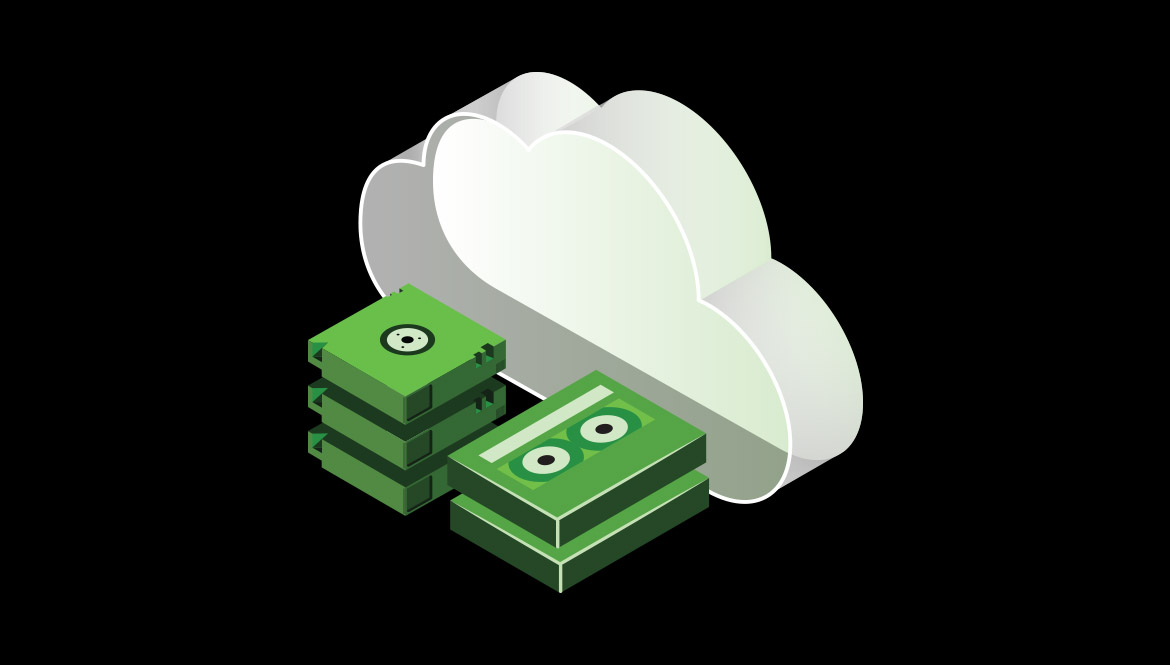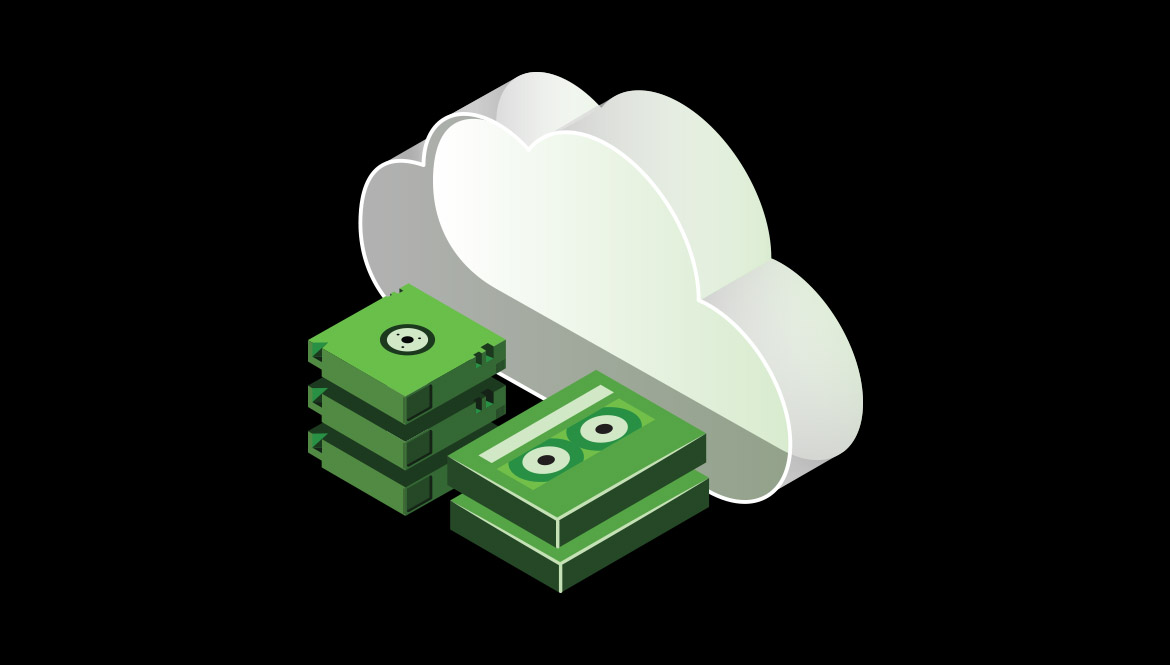Backup tape storage was once the de facto solution for enterprise backup needs. Today, however, businesses are increasingly viewing tape as a legacy technology in need of a replacement.
Many enterprises are grappling with the tape vs cloud backup debate. Moving tape backup to the cloud seems almost inevitable, but is it the right choice for your business?
Some companies may decide to complement an existing tape-based data storage strategy with cloud-based storage, and there are many reasons to go that route. However, if you’re among those looking into tape versus cloud backup, consider these five benefits of replacing your legacy tape backup systems with modern cloud storage.
Wait, is tape still used for data storage?
Yes, magnetic tape backups are still used at many organizations—usually not for primary storage, but as archival storage and as part of a backup strategy.
There are several reasons why.
Long used as a lower cost, reliable, and secure option for storing cold data (not commonly accessed or used regularly), backup tape storage is still a part of many organizations’ data storage and backup strategy. However, most are by now at least considering cloud storage as a future goal.
Tape was an attractive option in its day: there was and is certainly appeal in being able to easily isolate tape backups from threats of physical attack. And having on-site backups means not having to worry about the current network or internet speed or availability.
Last, tape is familiar technology that many enterprises understand well. Those that aren’t considering replacing the technology may be taking an “if it isn’t broken, don’t fix it” approach.
Main Disadvantages of Tape Storage
Tape storage may not be broken, but it’s at least showing its age. Consider these disadvantages of sticking with tape rather than moving to the cloud for long-term storage.
First up is speed. Storing and retrieving data from tape storage systems is slow. System recovery from tape storage can take longer, increasing downtime and hurting operations.
Second, someone needs to be physically present to label new tapes, troubleshoot issues, perform maintenance, and organize the tapes. Finding missing or poorly labeled tapes is sometimes necessary as well.
Also in the tape backup vs cloud discussion is media failure, a major concern for tape storage. Tapes don’t last forever: they slowly break down over time and do so even faster in poor conditions. Also, any dust in the air risks scratching the magnetic coating of the tape, making it unusable. Moving tapes around also risks corrupting data, and once a tape is physically damaged, the data is unrecoverable.
Tape backup systems have limited backward compatibility, usually no more than two generations back. For example, LTO-8 (linear tape-open 8) is only backward compatible one generation. This means organizations bear new financial and resource costs every time they update their tape technology.
Why should you replace tape backup with cloud storage?
So what should organizations use for long-term storage and data protection as an alternative to tape backup? Cloud-based object storage offers a number of benefits, from accessibility and performance to security and cost.
1. Access to Data
First, cloud storage gives you faster access to more up-to-date data.
With tape, backups are not automatic nor as frequent as is possible with cloud backups. There’s a practical or functional limit to how frequently a business can make tape backups — a limit not shared by cloud storage. In an increasingly data-driven world, weekly or nightly backups are no longer enough for many industries, as the amount of data that could be lost before the next backup is immense and/or business-critical.
Highly efficient networks working with cloud backups can handle data transfers quickly, automatically, and cost-effectively. This improved speed and access goes both ways, too, improving an organization’s ability to upload backups and to access those files later on.
A good industry rule to go by is the 3-2-1 rule. That is, a business should have three copies of their data in existence at any given time. In addition, a company should have two different media types (disks, disk drives, tape, cloud) storing this data within those three copies. To protect against theft and local conditions, especially disasters such as flood, fire, and other natural disasters, one of those copies should be off-site.
Cloud backups make distributing your backups and following the 3-2-1 rule far easier. Cloud-to-cloud backups give your business affordable access to multiple off-site backups.
2. Significantly Lower Costs
Tape used to be the most economical choice for long-term storage solutions, but that’s no longer the case. The constant need to upgrade infrastructure and maintain aging media creates recurring and increasing costs, even as the cost of the cloudmany cloud services continues to drop.
Updating software and firmware to use tape backups is time consuming and costly, as are the numerous human interventions that cloud backups bypass.
Here’s a real-world example: storing about 12 TB of data via tape costs about $100,000 by just the second year. Lyve Cloud’s cloud backup solution costs just a few hundred dollars for a backup of the same size.
3. Security
Cloud backup allows for the use of encryption, allowing for the secure movement and storage of data. Tape backups generally don’t allow for any corresponding security measure (though they are largely only vulnerable to physical theft).
Maintaining multiple backups is another form of security: if one copy is corrupted, another copy (especially one in another location) can be used to restore the system. The cloud makes this far simpler, and many cloud providers include redundancy like this in some or all packages.
4. Full-Service Flexibility
Tape can’t provide the efficiency of scalable storage that the cloud provides. Business needs change over time, and scaling up on-site capabilities is a major investment. Scaling down is similarly complicated, given the time and resources required to decommission physical space, disks, and network equipment.
When considering tape versus cloud storage, the cloud allows near infinite scaling, services to be added and deleted as needed, and various full and partial backups to be run automatically. It’s true full-service flexibility that tape systems simply cannot match.
5. Bye, Obsolescence
Businesses are constantly fighting technology obsolescence. But no matter what new technologies, regulations, or standards come into play in the future, cloud providers can adapt to meet the most best practices. Also, when considering goals for recovery, cloud backup is much more suited to meet RPOs (recovery point objectives) and RTOs (recovery time objectives).
Considering what the cloud has to offer, tape backup replacement should be a priority for companies looking to cut costs and increase efficiency. Tape backup might have made sense in the past, but cloud offers much more flexibility for the present and future.
Get the benefits: Catch up with Lyve Cloud
Considering a tape-to-cloud or hybrid migration? You need a company you can trust to understand and meet your needs, one that will support you during migration and as you review your legacy data.
With Lyve Cloud, you can rest easy knowing that confidentiality and security are maintained, data is organized, processes are optimized, costs are reduced, and you are in control of how your data is accessed and backed up.
While reviewing and upgrading your backup strategy is easy to overlook, the cost of failure cannot be overstated: among businesses with inadequate backups, 94 percent of companies that are hit with catastrophic data loss will not recover. But with a strategic cloud partner as part of your backup strategy, you can avoid this risk.
Ready to start your move to the cloud? Explore Lyve Cloud now!







